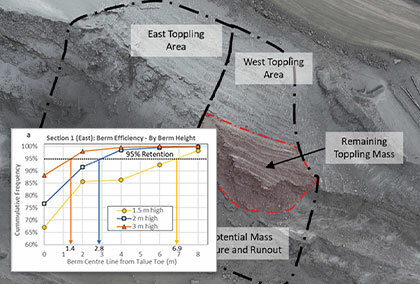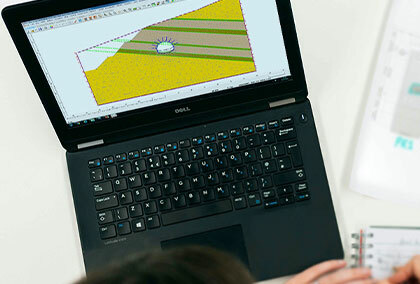Developing Safe Mine Re-Entry Plans Using RS2
It would be a perfect world if slope failure didn’t need to be on an engineer’s mind. However, even with advanced technology like radar monitoring and software for predictive modelling, slope failure can occur.
This case study details the failure of a highwall at an open-pit coal mine in Alberta, Canada in which two failures occurred, one on July 9th, 2017 followed by a larger failure August 5th, 2017. Mining at this site was suspended until a safe re-entry plan was developed and implemented.
In an industry where time is money, powerful geotechnical tools enable you to get results efficiently so that projects are completed on schedule or in this case mining could resume as soon as possible. RS2, our 2D finite element analysis program, was used to conduct back-analysis to first determine the cause of the two slope failures. Then, forward-analysis was used to model two scenarios for safe re-entry to resume mining.
Open Pit Mine South Highwall
The south highwall of this mine was about 60m high and consisted of interbedded sediments including sandstone, siltstone, shale, mudstone, limestone and conglomerate. These sediments dipped into the highwall between 50 and 65 degrees. There were also two parallel faults that ran obliquely into the wall at the toe of the failed slope.
Radar monitoring of the south wall was established only three days prior to the initial failure so there was not enough information to predict the failure from occurring. However, the second failure was identified prior to the event by radar.
After these two failures occurred, the eastern part of the highwall was seen to have potential rockfall hazards and the western part of the wall as having a large toppling rock mass that had not fully failed.
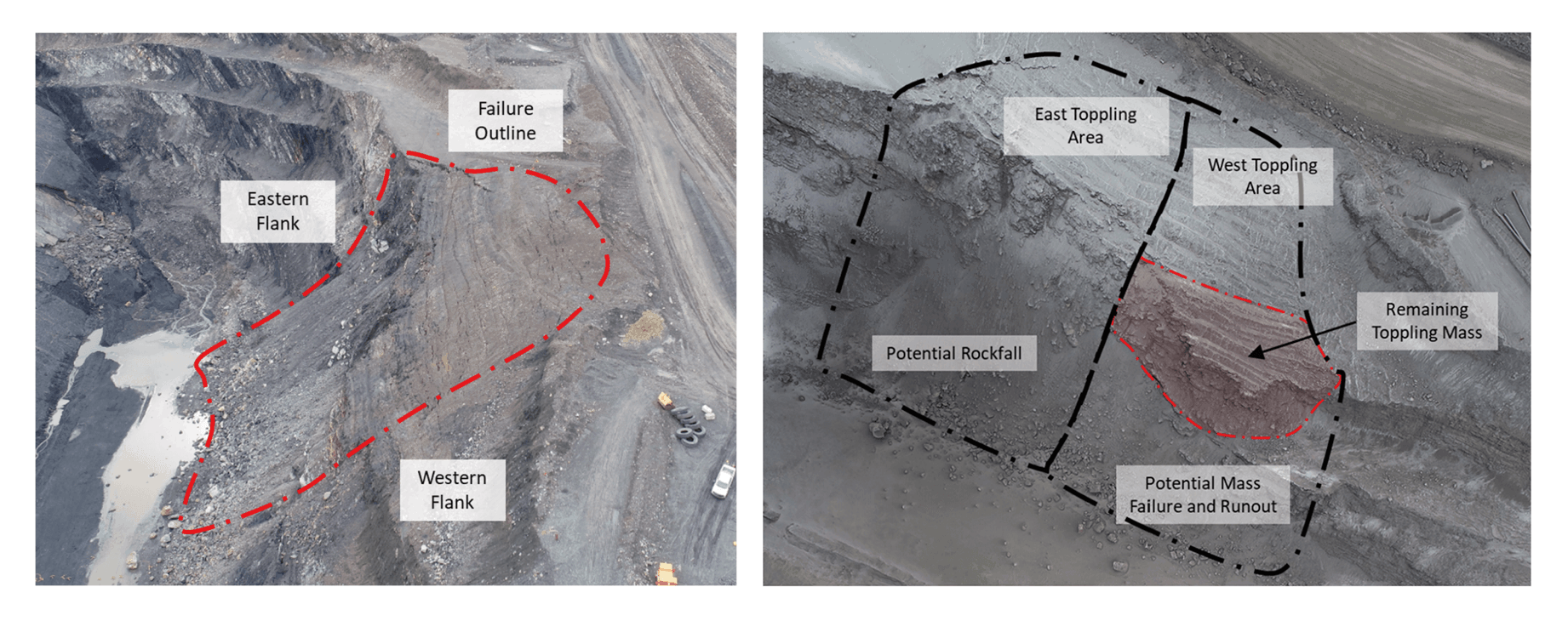
RS2 Analysis
The methodology includes an elastic-plastic material, disturbance factor D= 0.7, and an in-plane horizontal to vertical stress ratio k= 1.5. Shear stiffness was estimated based on nearby direct shear testing and normal stiffness was estimated to be 3 times the value of shear stiffness.
Back-analysis of the south highwall was conducted using RS2 to fully understand what caused the slope to fail. The results show the initial failure to be caused from over-digging at the toe of the slope. This caused a circular failure within the material.

Re-entry Plan
Shear Strength Reduction (SSR) was used to calculate the strength reduction factors (SRF). The design acceptable criteria (DAC) of 1.3 was the target for designing the re-entry plan. Forward analysis was used to model two different re-entry scenarios.
Scenario one included rockfall deflection or containment berm at the bottom of the failed slope with no crest unloading above. Benching would be implemented below the toe of the slope.
Scenario two suggested unloading the crest by benching through the failed material with two benches, 10m high and 20-25m wide. This would result in stabilization of the slope and partial mitigation of the west toppling hazard. A loaded Komatsu 830 truck was used as a worst-case truck load at the top of the crest, modelled using 2MN/m line loads spaced 7m apart.
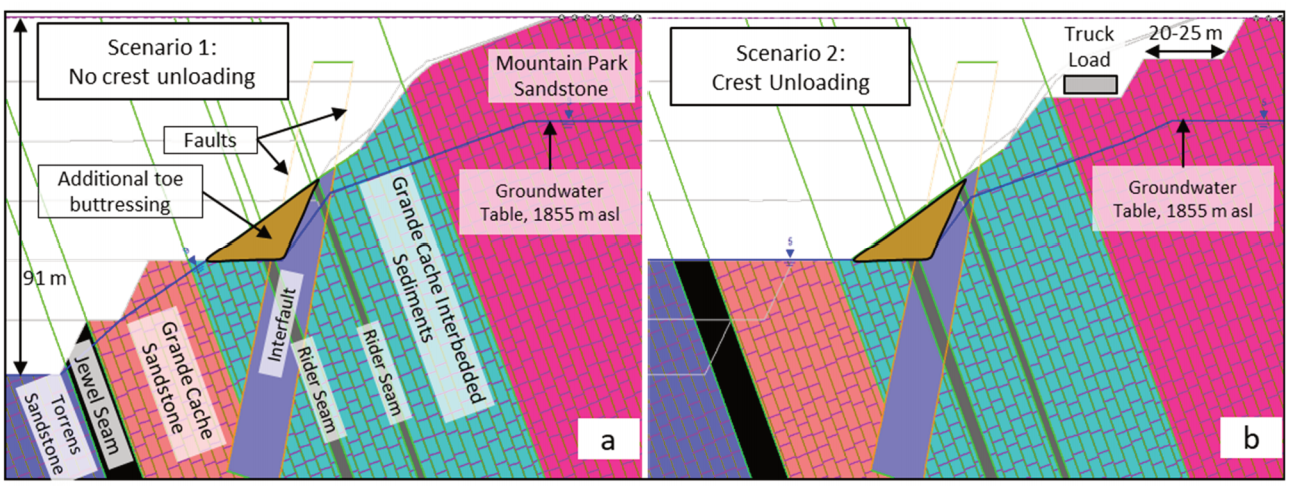
The results of the SSR analysis are shown in the table below. Scenario 1 had the potential for failure to occur again with strength reduction factor below 1. Scenario 1 also doesn’t address the potential for the west part of the wall from toppling. Scenario 2 does address the toppling hazard and fulfills the target 1.3 SRF for mining to 1805m and 1.1 for the final sub-out.
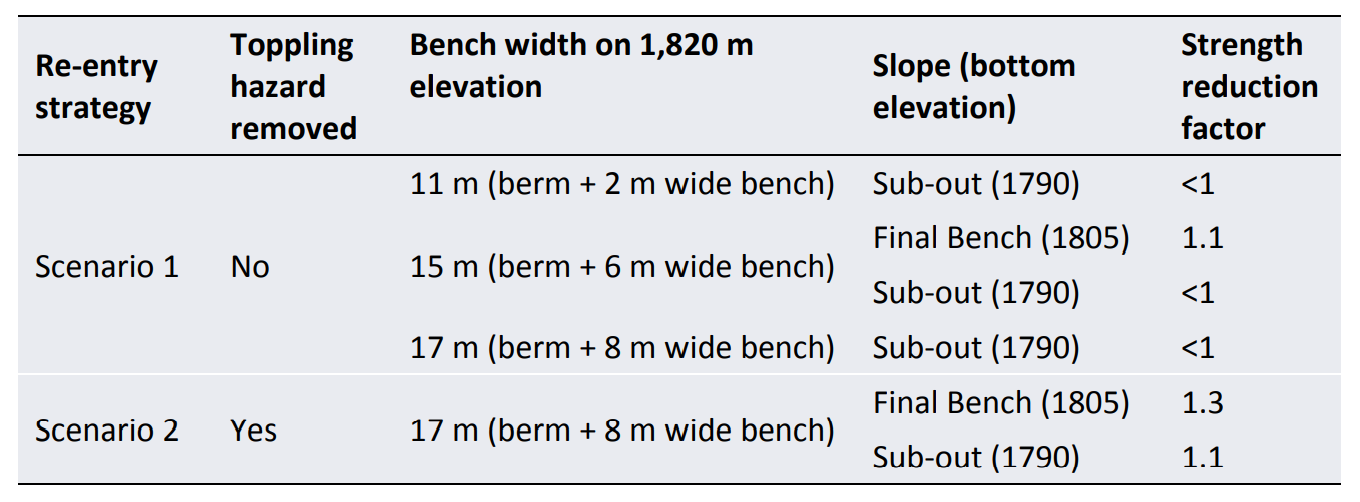
Based on these results of SSR analysis, Scenario 2 was selected as the method for implementation.
Whether it is predictive modelling, or back-analysis of slope failures, RS2 has once again proven it is an effective tool for analyzing problems in open-pit mines. For even more detailed analysis, RS3, our 3D Finite Element Analysis program can handle the projects that require a more in-depth look into your model. The latest version of RS3 has arrived, packed with new features to ensure you are using one of the best 3D FEM programs on the market.
RS2 & RS3 are comprehensive finite element analysis programs that can handle a wide variety of applications.
Note: The above case study is based on the full-paper by Bidwell A., et. al presented at Slope Stability 2020. Read the full paper here.
